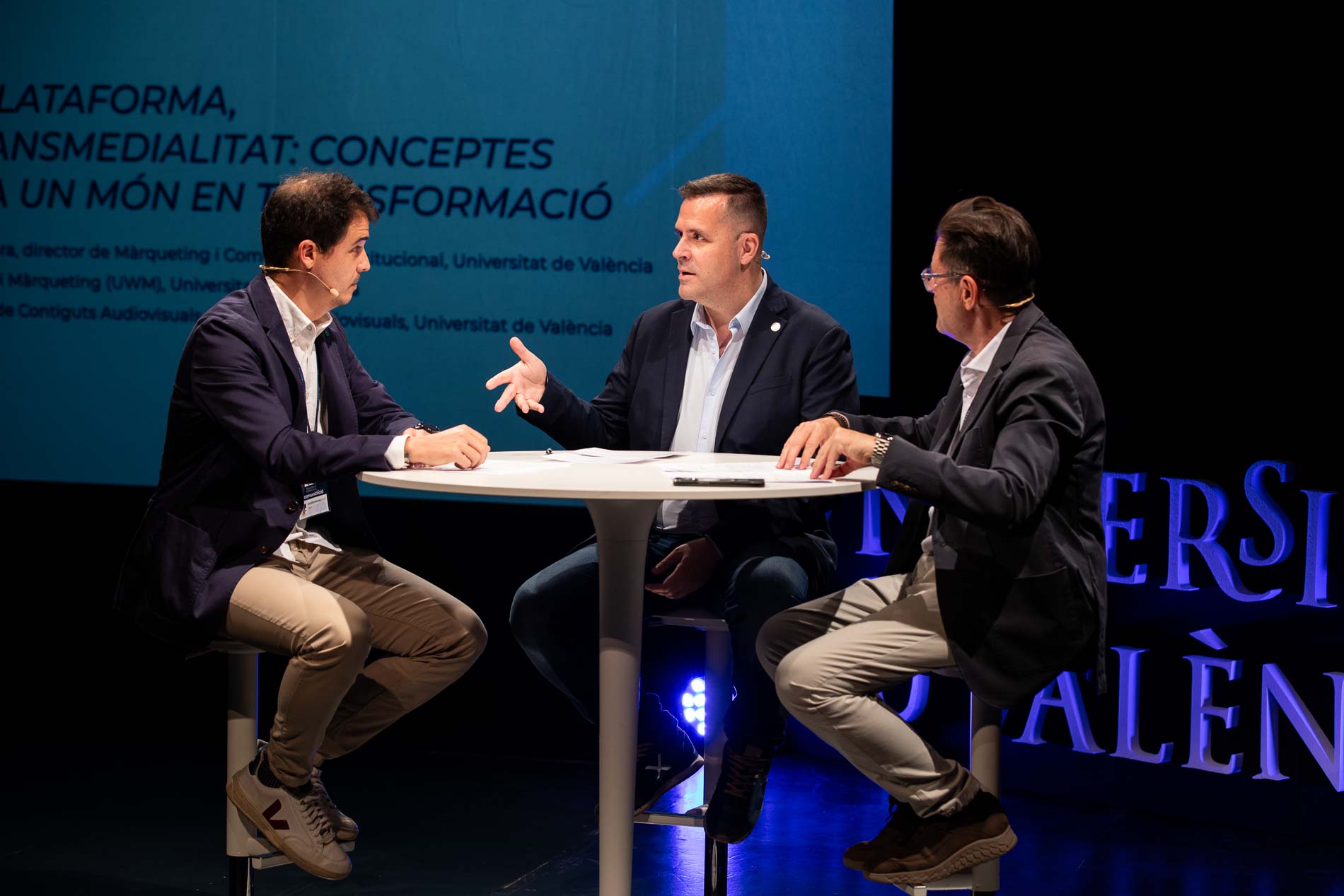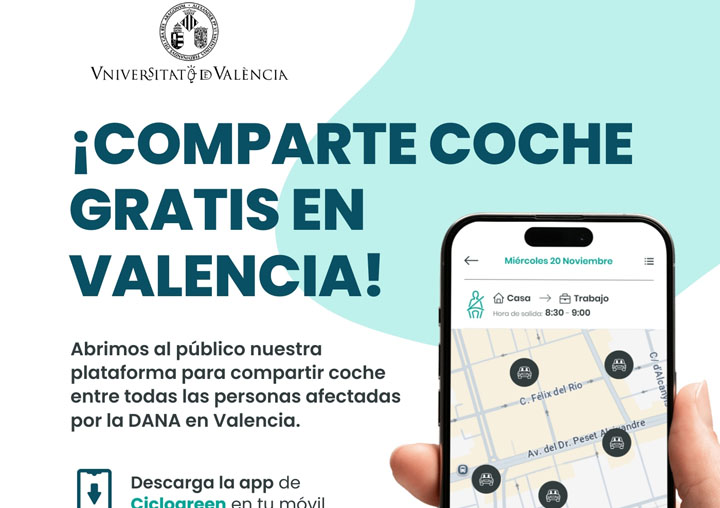Universitat de València holds the Xarxa Vives’ 6th conference on Communication
- Web and Marketing Unit
- September 20th, 2024
By exploring different areas of digital communication in order to share experience and knowledge and create a communication strategy that’s coherent and integrated in diverse digital channels, the gathering focuses on “all-channel” and transmedia, like previous editions.
La Nau Cultural Centre’s Sala Matilde was the stage for the 6th conference on Digital Communication of Xarxa Vives. It gathered over 40 professionals of communication to discuss “all-chanel” and transmedia in university communication.
Universitat de València’s Principal M. Vicenta Mestre and Xarxa Vives executive secretary Ignasi Casadesús inaugurated the conference. After and institutional reception, panel discussions, lectures and a speed-dating session took place, addressing different topics such as managing the presence on different media to improve the bond with the public or new tools to elaborate transmedia narrative.
Multimedia, multiplatform, all-channel and transmedia.
Principal and Universitat de València Marketing and Communication Bureau head Joan Enric Úbeda, Universitat de València’s Web and Marketing Unit head Josep Gonzalbo and Universitat de València’s Audiovisual Workshop head Ignacio Rausell brought the key concepts for the session.
Úbeda started a debate about the concept of “multimedia communication” focusing on how “it combines text, audio, video and infographic content to enhance the user’s experience”. Rausell further explained the “multiplatform” concept that allowed an efficient communicaton through diverse channels.
Josep Gonzalbo addressed the “all-channel” concept as an strategy in which “message coherence and channel integration are vital”. “Transmedia” was discussed next, providing example strategies already implemented in Universitat de València, where content is divided to be consumed in independents fragments.

All-channel Strategy in university communication
Enric Sendra conducted the debate concerning the all-channel strategy including Josep Gonzalbo (Universitat de València), Miguel Ángel Linares (Universitat Autònoma de Barcelona) and Juan Salvador Pérez (Universitat Jaume I).
Pérez shared the UJI (Universitat Jaume I)’s experience with “UPO” a content manager generating web content as well as content for “the main channel” and other channels such as email, screens and social media.
Gonzalbo highlighted the UV’s investment in multimedia engineering, as “we have created newsletters divided for the students, administrative personnel and professors and investigators. We’re betting on OPI, the campus’ digital screens”.
Linares mentions the Universitat Autònoma de Barcelona (UAB) ongoing adaptation ability: “We’re adding more and more channels, although due to limitted personnel, we have to be selective”.
Transmedia communication in university
Sendra also conducted the debate about creating immersive and coherent narratives through various platforms.
Catalina Aina and María Femenias from the Universitat de las Illes Balears (UIB) mentioned the importance of adapting the messages for the social media an different targets: “Each network needs a particular approach to reach every age group”.
Mercé Guillén from the Universitat Oberta de Catalunya (UOC) pointed out the challenges in online communication, since “stablishing a narrative with students thousands of kilometers away is an actual challenge. We elaborate the content based on interactions and active attention”.
Ignacio Rausell (UV) presented “A la recerca”, a project “for students to consult directly with investigators”.
Alba Porta from Universitat Rovira i Virgili (URV) did insist in the importance of inner coordination: “It is of the utmost importance to avoid one-way network, even if online conversations can be challenging”.

À Punt’s multichannel cover of Campanar’s fire
À Punt Media’s Digital Area head Javier Lifante analysed the communication management of the Campanar fire, highlighting the multichannel strategy used to provide a full and coherent cover of it.
Lifante mentioned the journalism’s challenge in the digital era, stating that “it is key to immediately cover the event without ending up sharing misinformation or drama”.
Digital communication innovative projects by Xarxa Vives.
The session’s conclusion was an innovative projects speed-dating with several experts shared their projects.
Catalina Aina and María Femenias (UIB) presented the Instagram graphic strategy, María Rosa Bayà and Patricia Lainz form Universitat de Barcelona (UB) presented the renovation of the UB’s podcast for “engaging the public with daily content”.
Celia Marín from the Universitat Politècnica de València (UPV) explained the transition from radio to digital in her university “by creating a podcast platform for the university community, unifying our image”.
The speed-dating session went on with Alba Porta (URV)’s share on replacing the URV phone call centre with a digital attention system.
Josep Gonzalbo (UV) had the last word sharing the all-channel strategy of InfraestructuresUV, “a communication including web, social media, newsletters, OPI, catalogue sheets, 3D virtual tour, digital cartography and information about the infrastructure project’s doing.”
The conference came to an end by the hand of Enric Sendra and Joan Enric Úbeda.
File in:















